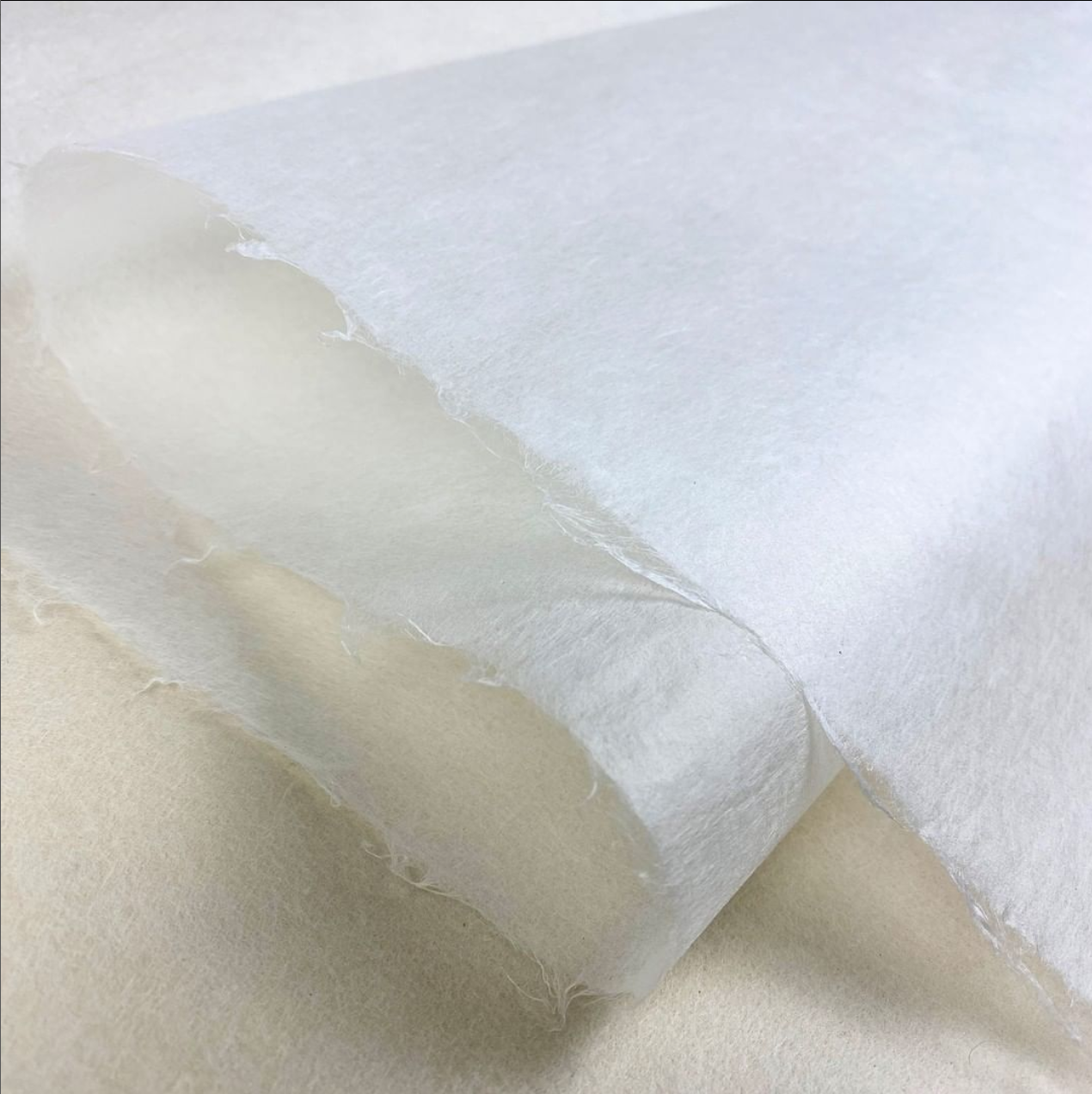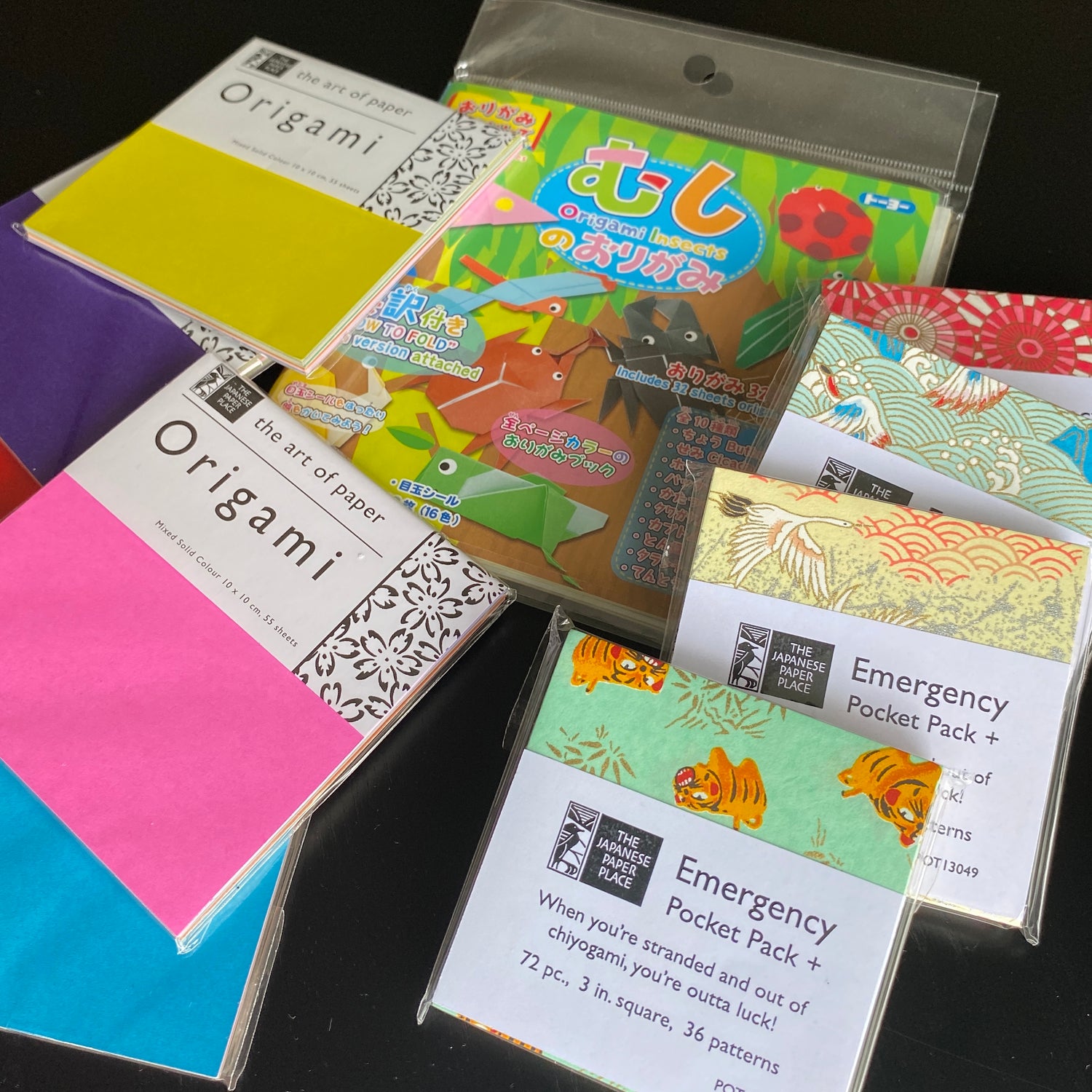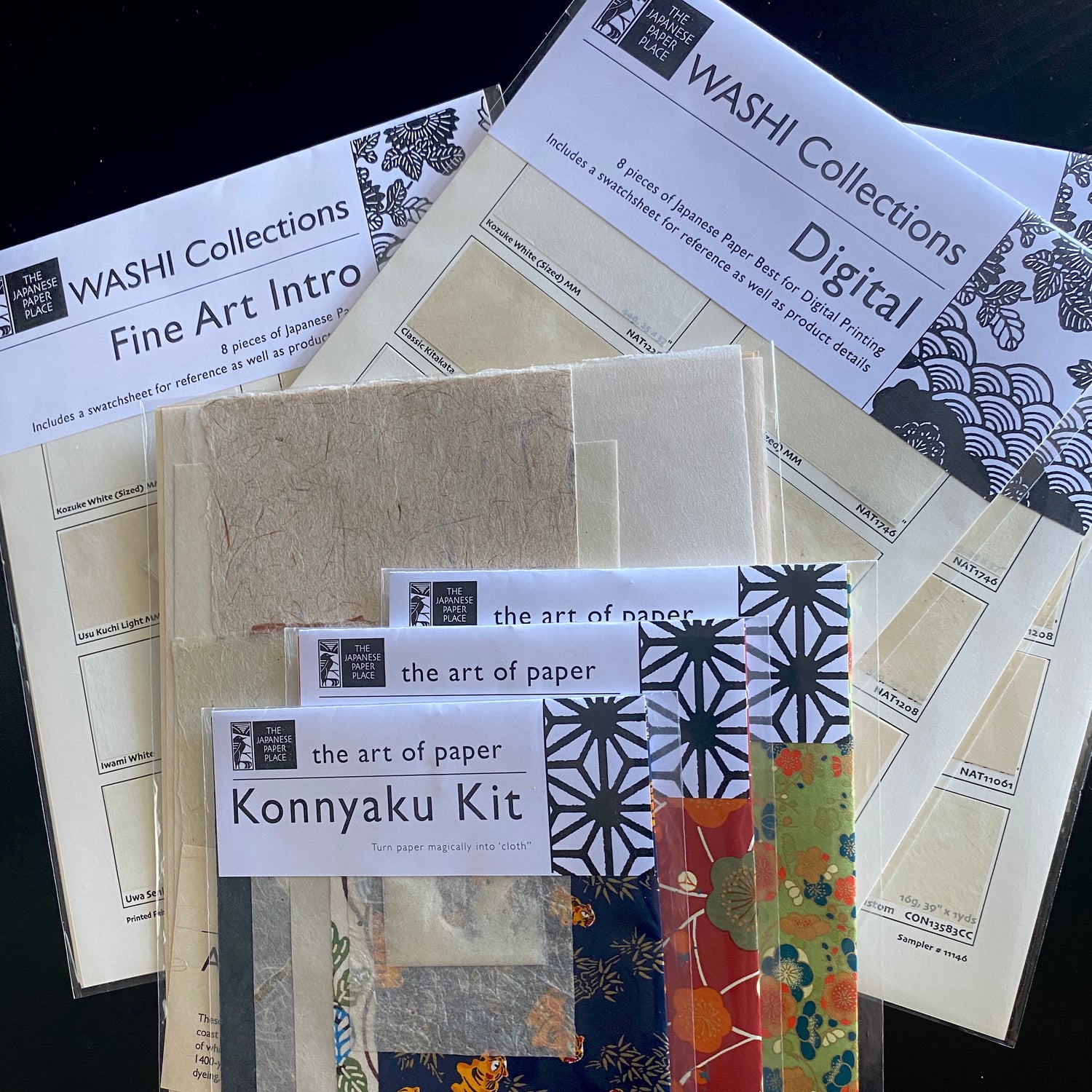About Japanese Paper
Washi is the Japanese word for traditional papers made from a variety of renewable plant fibres. Wa means Japan, and shi means paper.
Japan has a long history of producing washi for everything from utilitarian tissues for cleaning swords to kamiko for making clothing to surfaces for the creation of the finest calligraphy, paintings and prints.


Nakagita Yoshiaki, CC BY-SA 4.0, via Wikimedia Commons
Washi was once used in virtually every facet of life in Japan. While there are far fewer papers being made today, and washi is no longer ubiquitous in Japan, there remains an astonishing array of papers for you to choose from.
History
Paper was originally made in China in the first century AD. The art was brought to Japan in 610 AD by Buddhist monks who produced it for writing sutras. By the year 800, Japan's skill in papermaking was unrivalled, and from these ancient beginnings have come papers that are unbelievable for their range of colour, texture and design. It was not until the 13th century that knowledge of papermaking reached Europe – 600 years after the Japanese had begun to produce it.
By the late 1800s, there were in Japan more than 80,000 families making paper by hand. Then, with the introduction from Europe of mechanized papermaking technology, and as things "Western" became sought after including curtains (not shoji) and French printmaking papers (not kozo), production declined, until by 1983 only 479 papermaking families were left. Today the few remaining families struggle to compete in the world market with handmade papers from India, Thailand and Nepal, where a lower cost of living makes it possible to produce papers more cheaply.
Raw Materials
The inner barks of three renewable shrubs indigenous to Japan — kozo, mitsumata and gampi — are the primary fibres used in making washi.
By the late 1800s, there were in Japan more than 80,000 families making paper by hand. Then, with the introduction from Europe of mechanized papermaking technology, and as things "Western" became sought after including curtains (not shoji) and French printmaking papers (not kozo), production declined, until by 1983 only 479 papermaking families were left. Today the few remaining families struggle to compete in the world market with handmade papers from India, Thailand and Nepal, where a lower cost of living makes it possible to produce papers more cheaply.
Kozo (paper mulberry) is the most widely used, has the longest fibre, and makes the strongest paper. It is grown as a farm crop, and the branches are cut annually. The plants will regenerate continually for about 40 years.

Mitsumata is a softer, shorter fibre, with a warm tone. While it is also grown as a crop, mitsumata takes 3-5 years to regenerate and thus makes a more expensive paper.

Gampi was the earliest plant used and is considered to be the noble fibre, noted for its richness, dignity and longevity. It has an exquisite natural sheen, and is often made into very thin tissues. Gampi has a natural 'sized' finish which does not bleed when written or painted on. Gampi resists cultivation and is mainly harvested in the wild. It is increasingly difficult for papermakers to acquire Japanese-grown gampi.

Method of Production
Careful preparation of the fibre for sheet-forming is key to the quality of the final paper. The method for the three fibres is quite similar, but here we will refer just to kozo washi, prepared in the traditional manner.
1. Japanese paper is not made from wood: Branches of the kozo bush, which have been pruned throughout the growing season, are harvested, cut to uniform lengths and steamed for several hours to loosen the outer bark from the wood. While the steamed branches are still warm, the brown outer bark and two layers of inner bark — the portion used to make washi — are removed from the wood core. At this point the fibre may be dried for later use or be further prepared. The wood core is dried and used for firewood or local crafts.









4. How the sheets of paper are made: The cooked fibre is then beaten to separate the strands in preparation for sheet-forming. Hand-pounding the fibre is rare these days: mechanical beaters of various kinds are used. After beating, any last bits of bark or knots of fibre are carefully picked out by hand in a process called chiri-tori.
The pounded fibre is added to a vat of water which has been thickened by the addition of neri, a mucilage derived from pounded roots of tororo-aoi (hibiscus) or noriutsugi (hydrangea). The resulting slurry is vigorously stirred until the fibre is evenly distributed. A mesh screen, called a su, is placed in a frame, a keta, and then repeatedly dipped into the vat to build layers of fibre to form the sheet. The slow drainage of water through the su, brought about by the thickening action of the neri, allows the maker to rock the screen back and forth and side to side, evenly spreading the kozo fibre to create strong sheets of washi.
The wet sheets are piled one on top of the other as they are formed. When completed, this stack is slowly pressed to expel the water. The still-damp, pressed sheets are then individually peeled from the stack and brushed onto a smooth flat surface to dry. The traditional drying surface is wooden boards which leave a slight woodgrain impression on the surface of the sheet. Heated stainless-steel dryers are now commonly used and are a modern adaptation.



Japanese Papermaking Today
While the committed and talented papermakers persevere in producing uncompromised papers, they do face some challenges:

-
The shortage of craftspeople to make the su, or screen on which the paper is formed. This is a craft demanding great focus and skill to cut and weave the needle-thin bamboo, or match the diameter of reeds one-to-the-other.
-
A workforce, as the children of papermaking families choose paths that have a more secure future and higher salary, without the labour-intensive requirements of papermaking.
-
A shortage of quality kozo, mitsumata and gampi fibres: considered by many to be the most serious challenge today. Kozo fibres from other countries, though available, are grown in quite different conditions. Natural oil spots appear as blemishes in papers made from Thai kozo, as have fibre knots in papers made from unpruned branches of imported kozo. Japanese gampi, which cannot be cultivated and is harvested in the wild, is increasingly difficult to procure.
-
From its peak of 80,000 families engaged in making washi in the late 1800s, the ongoing production by the 100 or so remaining families and studios (2020) is very impressive.



